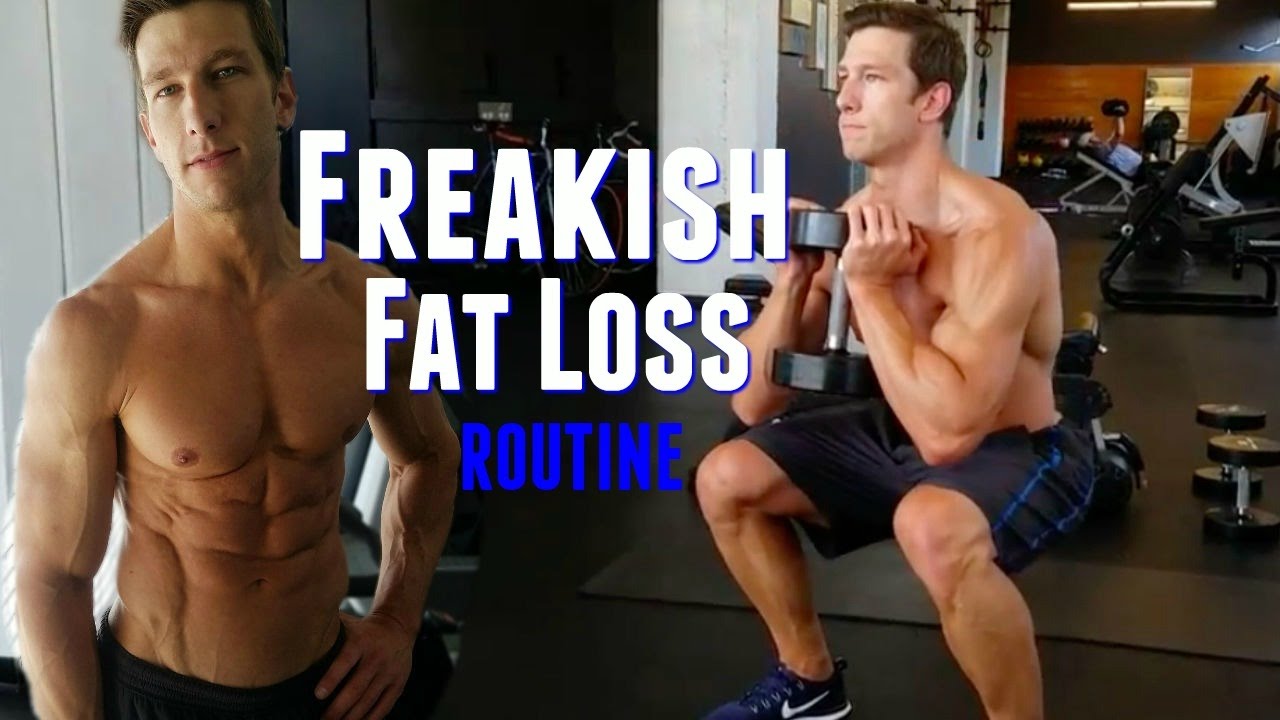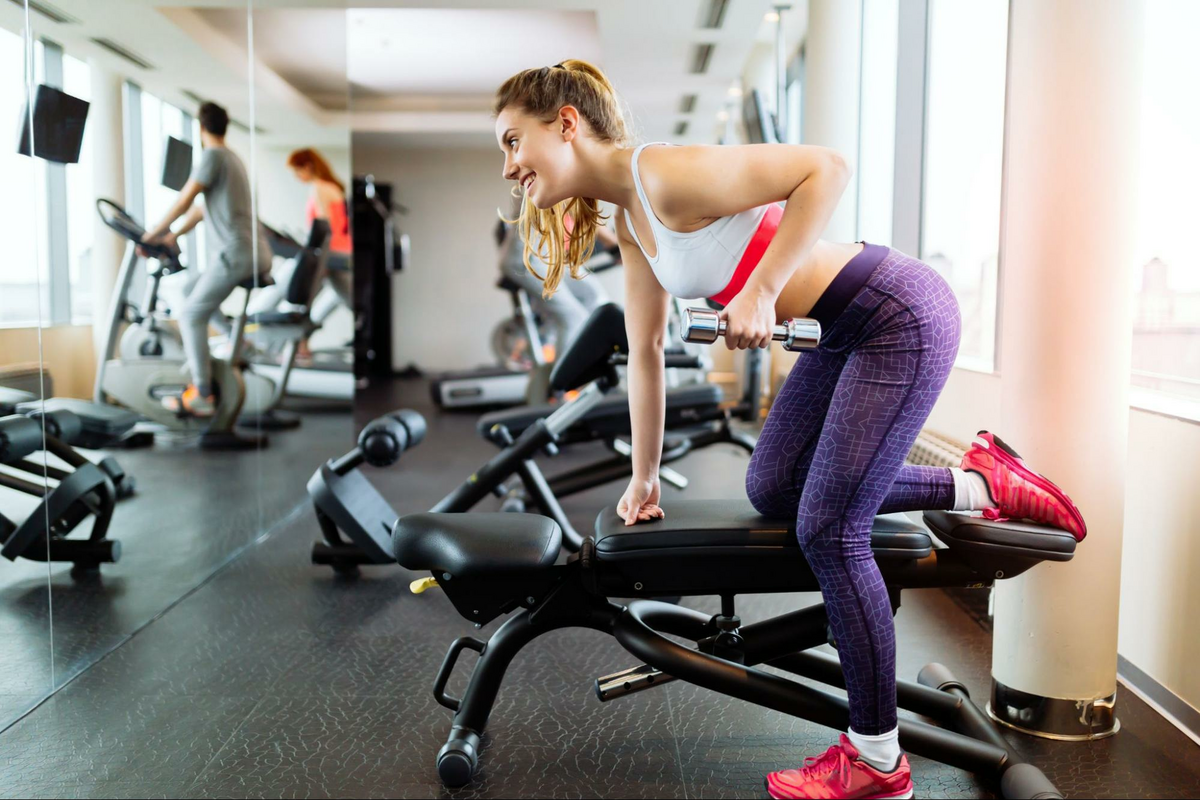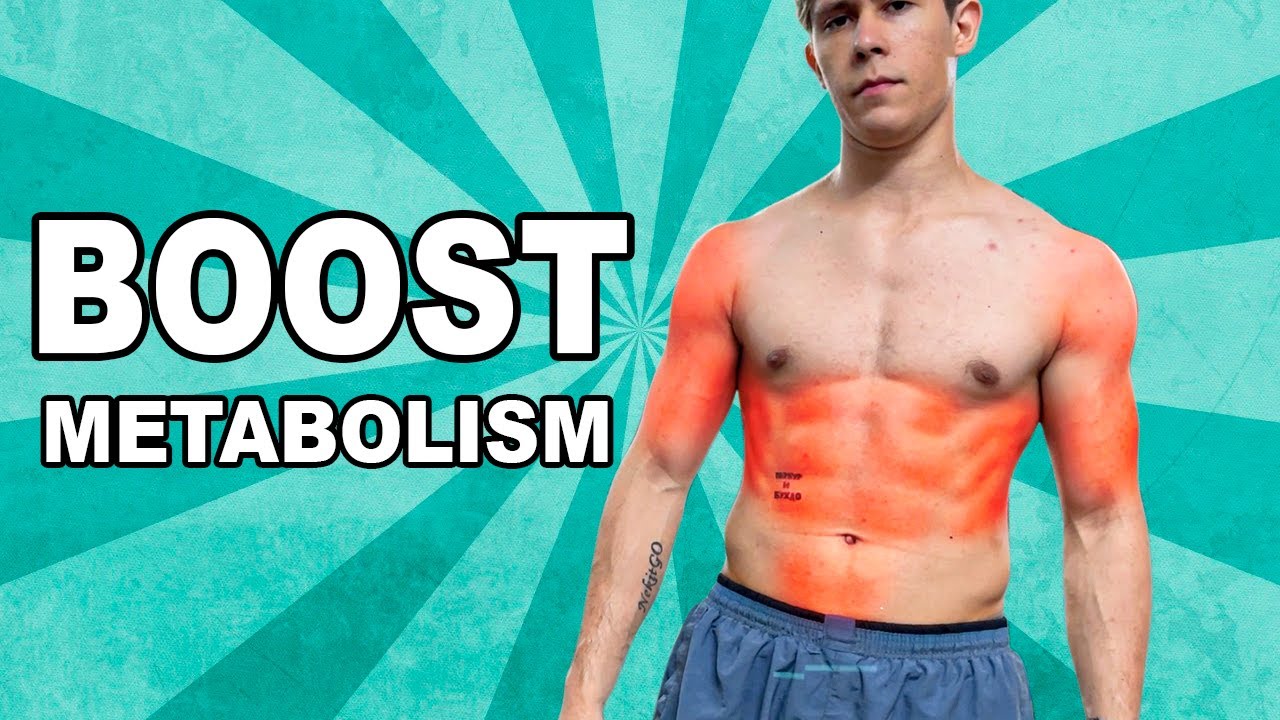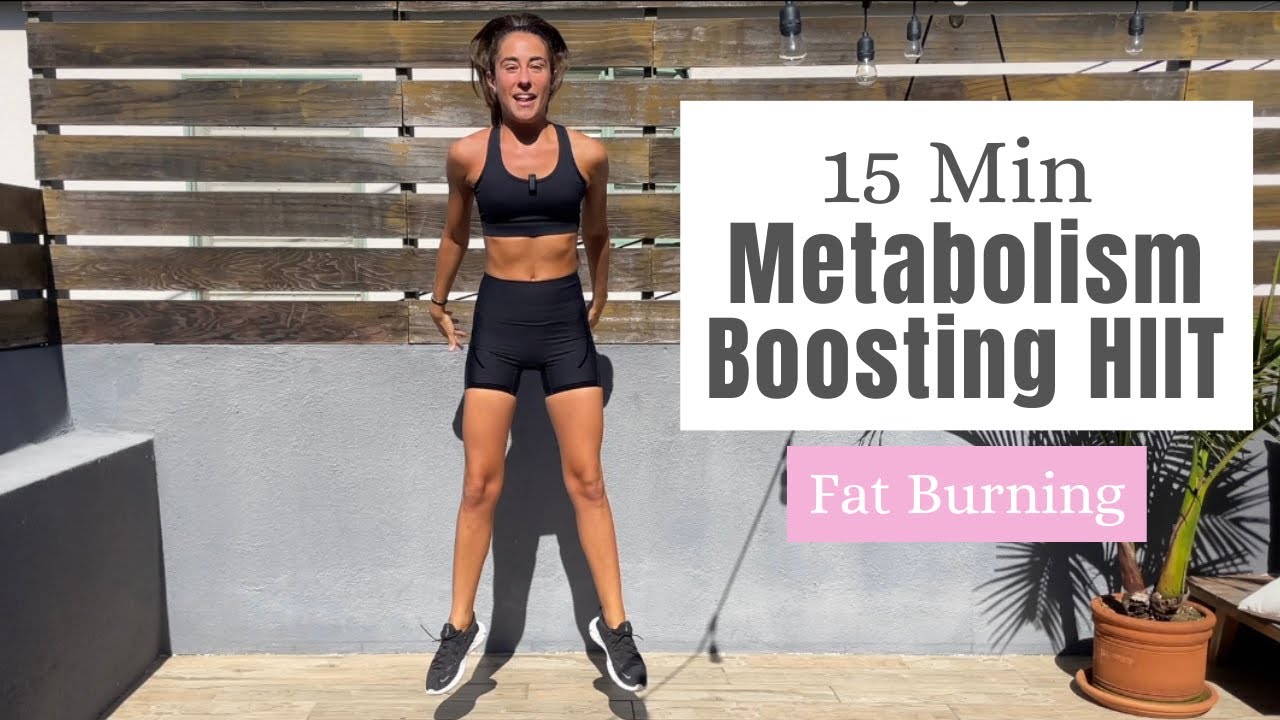Weightlifting program to boost metabolism and burn calories: Forget the bunny-hop-and-kale diet! This isn’t your grandma’s weight loss plan. We’re talking iron, sweat, and the glorious feeling of sculpting your body while simultaneously torching calories like a bonfire on a windy night. Prepare to unleash your inner weightlifting warrior and transform your metabolism into a calorie-crushing machine! This program is your ticket to a leaner, stronger, and more energized you, all thanks to the magic of lifting heavy things.
We’ll delve into the science behind how weightlifting supercharges your metabolism, crafting a personalized 8-week program designed to maximize calorie burn and muscle growth. We’ll cover everything from choosing the right exercises (think compound movements, not just bicep curls!) to optimizing your nutrition (goodbye, fad diets, hello delicious, metabolism-boosting meals!). We’ll also tackle common misconceptions, address potential challenges, and arm you with the knowledge and motivation to succeed.
Get ready to lift, learn, and love the process!
Introduction to Weightlifting and Metabolism: Weightlifting Program To Boost Metabolism And Burn Calories
So, you want to sculpt a physique worthy of a Greek god AND boost your metabolism to burn calories like a bonfire? Weightlifting is your ticket to both! It’s not just about building muscle; it’s about igniting your body’s internal furnace and turning your body into a calorie-torching machine. Think of it as upgrading your body’s operating system to a more efficient, energy-burning model.Weightlifting significantly impacts your metabolic rate, which is essentially the speed at which your body burns calories.
This isn’t a single, static number; it’s a complex process involving different types of metabolism, all working together (or sometimes against each other, depending on your pizza consumption habits). Weightlifting influences these metabolic processes in ways that benefit weight loss and overall health.
Types of Metabolism and Weightlifting’s Influence
Your metabolism isn’t a one-trick pony; it’s a multifaceted system with several key players. Basal Metabolic Rate (BMR) is the energy your body burns at rest, keeping your organs humming along. Then there’s your Thermic Effect of Food (TEF), the energy expended to digest and process what you eat. Finally, we have Activity Thermogenesis (AT), the energy burned through physical activity, and this is where weightlifting shines! Weight training increases your BMR by building muscle mass.
Muscle tissue is metabolically active, meaning it burns more calories even when you’re chilling on the couch watching cat videos. Furthermore, weightlifting significantly boosts AT, the energy expenditure from your workouts themselves. Finally, while not directly influenced by weightlifting, increased muscle mass can lead to a higher TEF.
Caloric Expenditure of Weightlifting Exercises
The number of calories you burn during weightlifting depends on several factors: intensity, duration, your weight, and the specific exercises performed. However, we can give you a general idea. A one-hour weightlifting session can burn anywhere from 300 to 600 calories, depending on the intensity and your body weight. For instance, a vigorous session involving compound exercises like squats, deadlifts, and bench presses will burn significantly more calories than a lighter session focusing on isolation exercises.Think of it this way: squats are like a full-body calorie inferno, while bicep curls are more of a cozy fireplace.
For descriptions on additional topics like best weight training for fast muscle growth and strength gains, please visit the available best weight training for fast muscle growth and strength gains.
Both are good, but one packs a much bigger caloric punch. Let’s look at some examples:
| Exercise | Approximate Calories Burned (per 30 minutes, for a 150lb person) |
|---|---|
| Squats | 150-200 |
| Deadlifts | 180-250 |
| Bench Press | 120-180 |
| Overhead Press | 100-150 |
Remember, these are estimates, and individual results may vary. The key takeaway is that weightlifting, especially when incorporating compound movements, is a highly effective way to boost your metabolism and torch calories, both during and after your workout. It’s not just about the gym; it’s about transforming your body into a lean, mean, calorie-burning machine.
Designing a Weightlifting Program for Metabolism Boost
So, you want to sculpt a physique that’s not just aesthetically pleasing, but also a metabolic powerhouse? Think of your body as a finely tuned engine – the more you challenge it, the more efficiently it burns fuel (calories!). Weightlifting, when done correctly, is the ultimate performance enhancer for your metabolic engine. It’s not just about looking good; it’s about feeling energized, stronger, and ready to tackle anything life throws your way.
A Sample 8-Week Weightlifting Program
This program focuses on compound exercises – movements that work multiple muscle groups simultaneously – to maximize calorie expenditure and build lean muscle mass. Remember, consistency is key! Listen to your body, rest when needed, and gradually increase the weight as you get stronger. This is a sample; adjust it to your fitness level and always consult with a healthcare professional before starting any new workout routine.
| Day | Exercise | Sets | Reps |
|---|---|---|---|
| Monday | Squats | 3 | 8-12 |
| Monday | Bench Press | 3 | 8-12 |
| Monday | Bent-Over Rows | 3 | 8-12 |
| Wednesday | Deadlifts | 1 | 5 |
| Wednesday | Overhead Press | 3 | 8-12 |
| Wednesday | Pull-ups (or Lat Pulldowns) | 3 | As many reps as possible (AMRAP) |
| Friday | Lunges | 3 | 10-15 per leg |
| Friday | Dumbbell Rows | 3 | 10-15 per arm |
| Friday | Calf Raises | 3 | 15-20 |
Targeting Different Muscle Groups for Maximum Calorie Burn
This program strategically targets major muscle groups. Legs (squats, lunges), chest (bench press), back (bent-over rows, pull-ups), shoulders (overhead press), and core (engaged throughout) are all worked, leading to a significant increase in calorie expenditure during and after your workout (the “afterburn effect”). Remember that even resting muscles contribute to your metabolism; building muscle mass through weight training increases your resting metabolic rate (RMR), meaning you burn more calories even when you’re not exercising.
Progressive Overload: The Key to Maintaining Metabolic Benefits
Progressive overload is the cornerstone of any successful weightlifting program. It simply means gradually increasing the challenge over time. This could involve increasing the weight you lift, the number of reps or sets you perform, or decreasing your rest time between sets. Without progressive overload, your body adapts to the current stimulus, and your metabolic gains plateau.
Imagine trying to run a marathon without ever increasing your training distance – you wouldn’t improve! Similarly, continually challenging your muscles ensures your metabolism keeps revving its engine. For example, if you can easily complete 3 sets of 12 reps of squats with 135 pounds, next week, you might try 3 sets of 12 reps with 140 pounds, or 3 sets of 15 reps with 135 pounds.
Exercise Selection for Optimal Calorie Burning

Choosing the right exercises is crucial for maximizing your metabolism-boosting weightlifting program. Think of your body as a finely tuned engine; the wrong fuel (exercises) will lead to sputtering, while the right fuel will roar to life. This section focuses on selecting exercises that not only build muscle but also torch calories, leaving you feeling energized and sculpted.
Finish your research with information from best strength training routine for women body shaping.
Compound Exercises for Metabolic Mayhem
Compound exercises are your secret weapons in the war against sluggish metabolisms. These movements engage multiple muscle groups simultaneously, leading to a greater calorie burn during and after your workout (the dreaded “afterburn effect”). This is because your body requires more energy to recover from the intense work these exercises demand.
Here are five compound exercises guaranteed to get your metabolism humming:
- Squats: The king of compound exercises. Squats work your quads, glutes, hamstrings, and core, leading to significant calorie expenditure. Imagine the power of a mighty oak tree, its roots (legs) firmly planted, lifting a massive weight (your body). That’s the essence of a perfect squat. Proper form is key to avoid injury; keep your back straight, chest up, and lower until your thighs are parallel to the ground.
- Deadlifts: These are the ultimate full-body workout. Deadlifts engage nearly every muscle in your body, from your back and legs to your arms and shoulders. Think of it as a powerful, graceful dance with the weight, requiring control and strength. Focus on maintaining a neutral spine and engaging your core throughout the lift.
- Bench Press: A classic upper-body exercise that targets your chest, shoulders, and triceps. The bench press is a fundamental exercise for building upper body strength and increasing calorie expenditure. Remember to control the weight throughout the movement, avoiding bouncing the bar off your chest.
- Overhead Press: This exercise works your shoulders, triceps, and upper back. Imagine lifting a heavy object above your head – that’s the power and engagement you should strive for. Maintain a stable base and controlled movement to avoid injury.
- Pull-ups: A fantastic exercise for your back, biceps, and forearms. Pull-ups are a testament to upper body strength and endurance. If you can’t do a full pull-up, start with assisted pull-ups or negative pull-ups to gradually build strength.
Caloric Expenditure: Compound vs. Isolation Exercises
Compound exercises significantly outperform isolation exercises in terms of calorie burning. Isolation exercises, such as bicep curls or triceps extensions, focus on a single muscle group. While beneficial for muscle definition, they don’t stimulate the same level of metabolic response as compound movements. For example, a 30-minute session of squats and deadlifts will burn considerably more calories than 30 minutes of bicep curls and leg extensions.
The increased muscle mass stimulated by compound exercises also contributes to a higher resting metabolic rate, meaning you burn more calories even when at rest.
Warm-up and Cool-down Routines for Peak Performance, Weightlifting program to boost metabolism and burn calories
A proper warm-up prepares your body for the workout, preventing injuries and improving performance. A dynamic warm-up, consisting of movements like arm circles, leg swings, and torso twists, is ideal. Think of it as gently waking up your muscles, preparing them for the challenge ahead.
A cool-down helps your body gradually return to its resting state, reducing muscle soreness and promoting recovery. This can involve light cardio, such as walking or jogging, and static stretches, holding each stretch for 20-30 seconds. Imagine your muscles as stressed springs; a cool-down allows them to gently unwind and relax.
Nutritional Considerations for Enhanced Results
Fueling your body for a weightlifting program designed to boost your metabolism is like prepping a race car – you wouldn’t put regular gas in a Formula 1, would you? The right nutrients are crucial for maximizing your workout gains and ensuring your metabolism is firing on all cylinders. Think of it as providing the engine with high-octane fuel.This section will delve into the critical role of macronutrients (protein, carbohydrates, and fats) in supporting your weightlifting goals and overall metabolic health.
We’ll also explore the importance of hydration and provide a sample meal plan to get you started. Get ready to optimize your nutritional intake and unleash your inner metabolic beast!
Macronutrient Balance for Metabolic Optimization
Maintaining a balanced intake of protein, carbohydrates, and fats is essential for maximizing your metabolic rate and supporting muscle growth and repair. Protein provides the building blocks for muscle tissue, carbohydrates offer the energy needed for intense workouts, and healthy fats support hormone production and overall cellular function. Ignoring any one of these macronutrients can significantly hinder your progress.
For example, insufficient protein intake will limit muscle growth, while a carbohydrate deficiency can lead to fatigue and decreased workout performance. A diet too low in healthy fats can negatively impact hormone levels, impacting muscle building and recovery.
Sample Meal Plan for Metabolic Support
This sample meal plan provides a balanced intake of macronutrients to support your weightlifting program and boost your metabolism. Remember to adjust portion sizes based on your individual caloric needs and activity level. This is just a template; consulting a registered dietitian or nutritionist can help you personalize a plan tailored to your specific needs.
- Breakfast (approx. 400-500 calories): Oatmeal with berries and nuts, a protein shake with spinach, or Greek yogurt with fruit and granola.
- Mid-morning Snack (approx. 150-200 calories): Apple slices with almond butter, a handful of trail mix, or a hard-boiled egg.
- Lunch (approx. 500-600 calories): Chicken breast salad with mixed greens and avocado, a lean protein source with quinoa and vegetables, or a lentil soup with whole-grain bread.
- Afternoon Snack (approx. 150-200 calories): Greek yogurt with a sprinkle of chia seeds, a small protein bar, or a handful of almonds.
- Dinner (approx. 600-700 calories): Salmon with roasted vegetables, lean ground turkey stir-fry with brown rice, or chicken breast with sweet potato and broccoli.
- Pre-Workout Snack (approx. 100-150 calories): Banana with peanut butter, a rice cake with avocado, or a small energy bar.
Hydration’s Role in Metabolic Processes and Workout Performance
Water is not just a beverage; it’s a fundamental component of countless metabolic processes. Dehydration can significantly impair your workout performance, reducing energy levels and increasing fatigue. It also negatively impacts your body’s ability to regulate temperature and transport nutrients. Adequate hydration is crucial for optimal metabolic function and recovery. Aim for at least 8 glasses of water throughout the day, adjusting intake based on your sweat rate during workouts and environmental factors.
Think of it like this: your body is a finely-tuned machine; proper lubrication (hydration) is key to its smooth operation. Ignoring this will lead to friction and ultimately, breakdown.
Monitoring Progress and Adjusting the Program
So, you’ve embarked on your weightlifting journey to become a metabolic marvel. Fantastic! But like a finely tuned engine, your body needs regular checks and adjustments to perform at its peak. Ignoring progress means missing opportunities to optimize your routine and potentially hitting plateaus faster than a cheetah chasing a sloth (which, admittedly, is pretty fast). Consistent monitoring is key to maximizing your results and avoiding burnout.Tracking your progress isn’t about becoming obsessed with numbers; it’s about gathering information to fuel smart decisions.
Think of it as data-driven self-improvement, not a weight-loss competition against yourself. By monitoring various aspects of your fitness journey, you can fine-tune your program for optimal results, preventing frustration and maximizing your gains.
You also can understand valuable knowledge by exploring best muscle building and strength training program for 30s.
Methods for Tracking Progress
Tracking your progress involves more than just stepping on the scale every morning. While weight is a factor, it doesn’t tell the whole story. A more holistic approach considers multiple metrics to paint a complete picture of your progress. This multifaceted approach allows for a more nuanced understanding of your body’s response to the weightlifting program.
- Weight: While not the sole indicator of success, regular weigh-ins (e.g., weekly) can reveal overall changes in body composition. Remember, muscle weighs more than fat, so fluctuations might not always reflect fat loss directly.
- Body Measurements: Using a tape measure to track changes in waist, hip, chest, and arm circumference can provide a more detailed picture than weight alone. These measurements can reveal changes in specific areas, even if overall weight remains stable.
- Energy Levels: How do you feel? Are you dragging yourself through the day, or are you bursting with energy? Monitoring your energy levels can indicate whether your program is sustainable and whether you’re adequately recovering. A significant drop in energy could signal overtraining.
- Strength Gains: Are you lifting heavier weights or performing more reps? This is a direct measure of your progress in strength and endurance. Keep a detailed log of your workouts, including the weight lifted, reps performed, and sets completed for each exercise.
Adjusting the Weightlifting Program
Your weightlifting program shouldn’t be set in stone. It should be a dynamic entity that adapts to your progress and limitations. This adaptability is crucial for sustained improvement and injury prevention. Think of your program as a living document, constantly evolving to meet your needs.
“A good program is adaptable. It’s not a rigid structure but a flexible framework.”
Adjustments can involve increasing weight, reps, sets, or introducing new exercises to challenge your muscles. Conversely, you might need to decrease the weight or reps if you’re experiencing pain or fatigue. Listening to your body is paramount. Ignoring warning signs can lead to injury and setbacks. For example, if you consistently struggle with a particular exercise, consider modifying it or replacing it with a similar exercise that better suits your capabilities.
Rest and Recovery Schedule
Rest and recovery are not optional extras; they’re integral parts of a successful weightlifting program. Think of your muscles as delicate masterpieces that need time to rebuild and repair after a workout. Without adequate rest, you risk overtraining, leading to plateaus, injuries, and burnout. You can’t expect to sculpt a Michelangelo-esque physique without giving your body the time it needs to recover.A sample schedule might involve:
- Rest days: Include at least one or two rest days per week, allowing your muscles to recover and rebuild.
- Active recovery: On rest days, consider light activities like walking, stretching, or yoga to promote blood flow and flexibility without stressing your muscles.
- Sleep: Aim for 7-9 hours of quality sleep per night. Sleep is crucial for muscle repair and hormone regulation.
- Nutrition: Prioritize a balanced diet rich in protein, carbohydrates, and healthy fats to support muscle growth and recovery.
Addressing Potential Challenges and Misconceptions

So, you’re ready to sculpt your body into a metabolic masterpiece? Fantastic! But before you hoist that first barbell, let’s address some common myths and hurdles that might trip you up on your weightlifting journey. Understanding these pitfalls will help you navigate them with grace (and maybe a little less grunting).Many misconceptions surround weightlifting and its impact on metabolism.
Some believe it’s solely about bulking up, others fear it’ll make them look like a bodybuilder overnight, and some simply underestimate the commitment required. Let’s debunk these myths and arm you with the knowledge to conquer these challenges.
Common Misconceptions About Weightlifting and Metabolism
Weightlifting is often misunderstood, leading to inaccurate beliefs about its metabolic effects. One prevalent misconception is that only cardio burns significant calories. While cardio is beneficial, weight training builds muscle mass, which is metabolically active tissue, meaning it burns calories even at rest. Another misconception is that women will become bulky from weightlifting. This is largely untrue; women have significantly lower levels of testosterone, making it much harder to build large amounts of muscle.
Finally, some believe that spot reduction (targeting fat loss in specific areas) is possible through weightlifting. Unfortunately, fat loss is a whole-body process, not localized.
Potential Challenges and Solutions
The path to a boosted metabolism through weightlifting isn’t always smooth sailing. Inconsistent schedules, injuries, and plateauing are all potential roadblocks. Let’s explore these challenges and discover practical solutions.
- Inconsistent Schedules: Life happens. Work, family, and other commitments can disrupt even the best-laid plans. The solution? Build flexibility into your routine. Short, effective workouts are better than no workouts at all.
Aim for consistency over intensity some days.
- Injuries: Improper form and pushing too hard too fast can lead to injuries. Prioritize proper technique over lifting heavy weights. Start with lighter weights and focus on mastering the form before increasing the weight. Listen to your body, and don’t hesitate to take rest days when needed.
- Plateaus: Hitting a plateau is frustrating, but it’s a common experience. Your body adapts to your workouts, so you need to challenge it regularly. This could involve changing your workout routine, increasing weight, or altering the number of sets and repetitions.
The Importance of Consistency and Patience
Rome wasn’t built in a day, and neither is a boosted metabolism. Consistency and patience are key to achieving long-term metabolic benefits. Think of it as a marathon, not a sprint. Small, consistent efforts over time will yield far greater results than sporadic bursts of intense activity. Remember that building muscle and improving your metabolism takes time and dedication.
Don’t get discouraged if you don’t see results immediately; celebrate the small victories along the way. Consistency breeds success, and patience is the virtue that unlocks the long-term rewards. For example, a study published in theJournal of Strength and Conditioning Research* showed significant increases in resting metabolic rate after just 12 weeks of consistent weight training. This demonstrates the power of sustained effort.
Visual Representations of Exercises

Let’s ditch the blurry workout photos and dive into the nitty-gritty of proper form. Understanding these movements is crucial not just for building muscle and boosting your metabolism, but also for avoiding injuries that could sideline you faster than a greased pig at a county fair. We’ll visualize these exercises through detailed descriptions, so grab your metaphorical notepad and let’s get started.
Squat Form
The squat, a king among exercises, targets your quads, glutes, hamstrings, and core – basically, your entire lower body gets a serious workout. Imagine a powerful, controlled descent into a chair that isn’t actually there. Start with your feet shoulder-width apart, toes slightly pointed outwards. Keep your back straight, chest up, and core engaged – think of bracing yourself against a punch.
Lower yourself until your thighs are parallel to the ground, ensuring your knees track over your toes to avoid knee strain. Then, explode back up to the starting position, focusing on driving through your heels. Common errors include rounding the back (leading to potential back injury), letting your knees cave inwards (knee pain, hello!), and not going deep enough (missing out on maximum muscle activation).
Bench Press Technique
The bench press, a classic upper-body builder, primarily works your chest, shoulders, and triceps. Lie on a bench with your feet flat on the floor, gripping the barbell slightly wider than shoulder-width apart. Lower the bar to your chest in a controlled manner, touching your sternum. Pause briefly, then forcefully push the bar back up to the starting position, extending your arms fully.
Crucially, maintain a stable, flat back throughout the movement. Don’t bounce the bar off your chest; this can lead to injury. Avoid arching your back excessively, as this can strain your lower back. Safety precautions include using spotters (especially when lifting heavy weights), maintaining a controlled breathing pattern (inhale during the lowering phase, exhale during the pushing phase), and using appropriate weight.
Deadlift Form
The deadlift, a full-body powerhouse, engages nearly every muscle group from your head to your toes. It’s a fantastic exercise for building strength and boosting metabolism, but it also carries a higher risk of injury if not performed correctly. Stand with your feet hip-width apart, directly over the barbell. Bend down and grip the bar with an overhand or mixed grip (one hand overhand, one underhand), keeping your back straight and your core tight.
Lift the bar by extending your hips and knees simultaneously, keeping the bar close to your body. Avoid rounding your back, which can lead to serious injury. Lower the bar slowly and with control, reversing the movement. The benefits are immense – increased strength, improved posture, and a significant calorie burn. The risks, however, are equally significant if proper form isn’t maintained.
Focusing on maintaining a neutral spine throughout the movement is paramount.
Concluding Remarks

So, there you have it: a comprehensive guide to igniting your metabolism and sculpting your dream physique through the power of weightlifting. Remember, consistency is key. Don’t expect overnight miracles; this is a journey, not a sprint. Embrace the challenge, celebrate your progress, and most importantly, have fun! You’ve got this. Now go forth and conquer those weights (and those calories!).
Your stronger, more metabolically-amazing self awaits.
